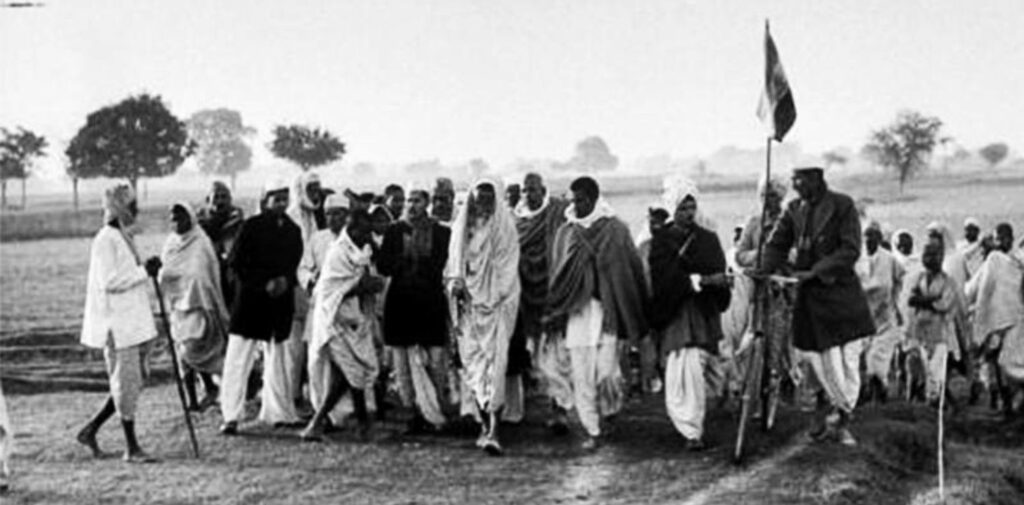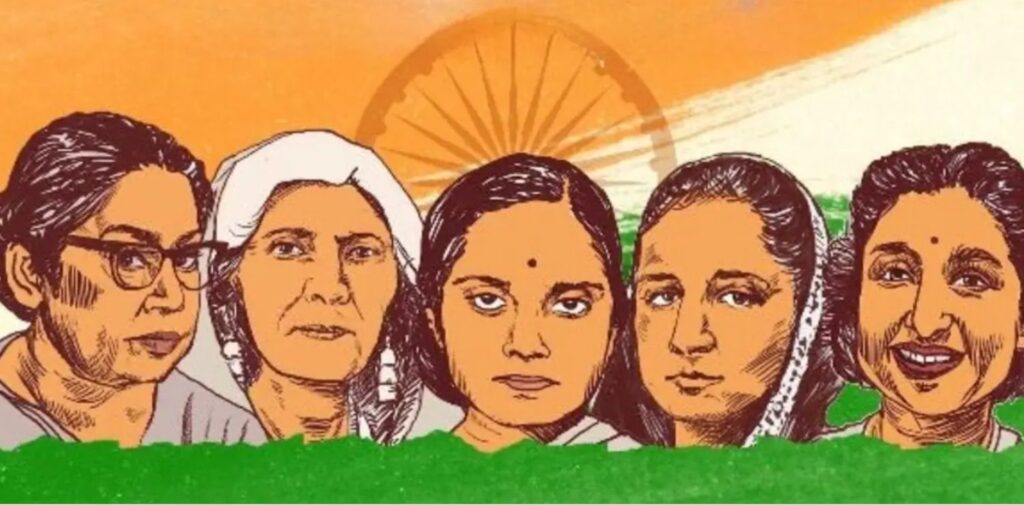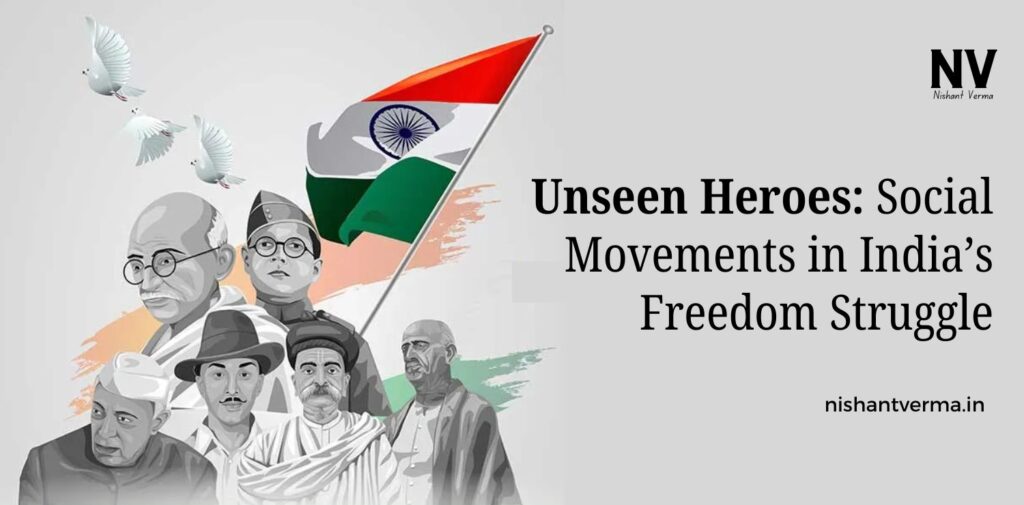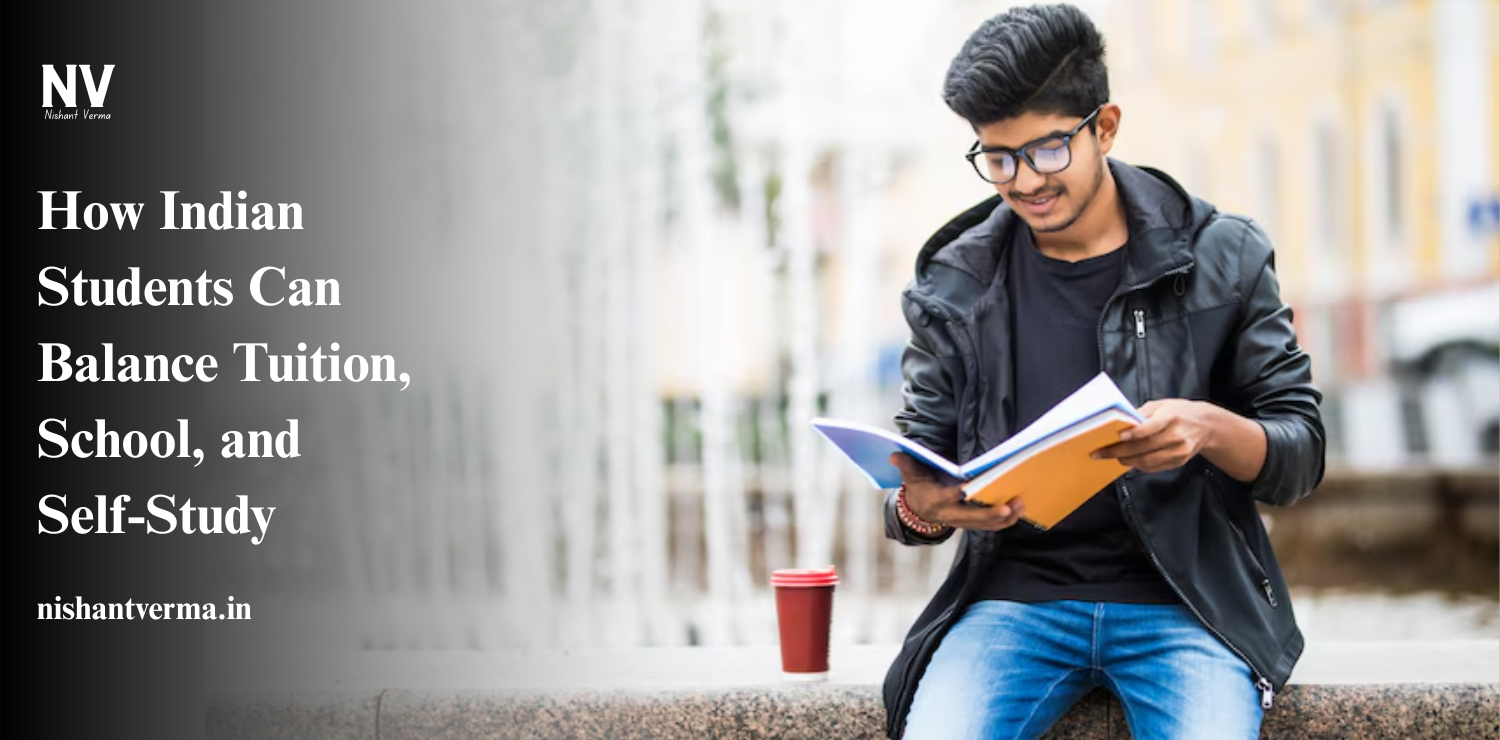India’s fight for independence from British colonial rule is often portrayed as a movement led by iconic figures like Mahatma Gandhi and Jawaharlal Nehru. While these individuals undoubtedly played significant roles, it’s crucial to understand that India’s freedom struggle was not solely the work of these leaders. The contributions of social movements, which were organized by marginalized communities, workers, farmers, and intellectuals, were often just as important, if not more so. These movements helped to lay the foundation for the mass resistance against British rule, pushing the boundaries of colonial control and sparking revolutionary change.
However, the narrative that has been shaped around India’s freedom struggle often diminishes the role of these social movements. The Nehru-Gandhi family, who dominated the political landscape after India gained independence, has been instrumental in overshadowing these grassroots movements in favor of a more centralized and top-down vision of the struggle. This article will explore the Unseen Heroes of social movements played in India’s fight for freedom and how the Nehru-Gandhi family’s approach, post-independence, contributed to sidelining their importance.
The Rise of Social Movements in India’s Freedom Struggle
India’s social movements during the British colonial period were driven by a variety of issues that went beyond political independence. These movements addressed the deep social inequalities and injustices that were prevalent within Indian society, many of which were perpetuated by both British colonial policies and traditional hierarchies within Indian culture. While the elite leadership of the Congress Party, including figures like Gandhi and Nehru, focused on securing independence from British rule, social movements pushed for wider societal reforms, including the abolition of untouchability, land reforms, labor rights, and the promotion of education.
One of the most important social movements in India’s fight for freedom was the Brahmo Samaj, led by Raja Ram Mohan Roy in the 19th century. The Brahmo Samaj advocated for social reforms such as the abolition of Sati (the practice of a widow self-immolating on her husband’s funeral pyre), the promotion of women’s rights, and the push for educational reforms, especially for women. Raja Ram Mohan Roy’s efforts laid the groundwork for later reforms that would challenge the deeply entrenched caste system and patriarchal social structures in India.
The Arya Samaj, founded by Swami Dayananda Saraswati, also played a vital role in promoting social change. Dayananda emphasized the importance of Vedic teachings and advocated for the elimination of social evils like child marriage, caste discrimination, and untouchability. His call for social reform resonated with many Indians, who were disillusioned with the oppressive practices sanctioned by both colonial rule and entrenched religious dogmas.

The Contribution of the Peasant and Worker Movements
One of the most significant social movements in India’s fight for independence was the peasant movement, which aimed to address the severe exploitation of farmers and workers under British rule. British policies, such as the Permanent Settlement Act of 1793, forced peasants into heavy tax burdens, leading to widespread poverty and unrest. The Champaran Satyagraha (1917), led by Gandhi, is often credited with addressing these concerns by organizing peasants to demand lower taxes from the British.
However, while Gandhi’s contribution in Champaran is acknowledged, the larger peasant movements that emerged across India are not given enough credit in mainstream narratives. Movements like the Non-Cooperation Movement (1920-22) and the Civil Disobedience Movement (1930-34) were not just political protests but had strong social dimensions, addressing the plight of farmers, workers, and marginalized communities who had been left out of the political elite’s leadership.
Similarly, the labor movements played an essential role in India’s independence struggle. Workers in industries such as textiles, coal mines, and transportation faced brutal working conditions and were subjected to exploitation by both British capitalists and Indian factory owners. The All India Trade Union Congress (AITUC), founded in 1920, was one of the first national unions that brought together workers to organize strikes, protests, and demand better working conditions, better wages, and workers’ rights. However, despite their immense contributions, these social movements often found themselves sidelined in the post-independence era.

The Role of Women’s Movements
Another critical aspect of India’s social movements was the women’s rights movement, which sought to improve the status and rights of women in Indian society. Leaders like Sarojini Naidu, Kasturba Gandhi, and Kamala Devi Chattopadhyay worked tirelessly not just for independence but also to uplift women. The Bardoli Satyagraha (1928), led by Sardar Vallabhbhai Patel, also witnessed strong participation from women, especially in the struggle against oppressive taxes.
While women played a crucial role in the fight for independence, the post-independence narrative, shaped largely by the Nehru-Gandhi family, often relegated their contributions to the background. Indira Gandhi, as the first female Prime Minister of India, should have been an advocate for women’s rights. However, her policies often failed to recognize the grassroots struggles of women, focusing instead on consolidating power within the political elite and disregarding the needs of women from rural and marginalized backgrounds.
The Nehru-Gandhi Family: Sidelining Social Movements
While social movements were central to India’s fight for freedom, the narrative constructed by the Nehru-Gandhi family after independence often minimized their significance. After India gained independence in 1947, the country’s political and social trajectory was largely shaped by Jawaharlal Nehru and his successors, particularly his daughter, Indira Gandhi. While their leadership undeniably helped shape modern India, it also had a profound impact on how the contributions of social movements were perceived.
Nehru, for example, placed great emphasis on the development of modern India through industrialization and the establishment of a strong central government. His vision, though progressive in many ways, was top-down and failed to address the social and economic needs of the rural population that had been at the heart of the freedom struggle. Nehru’s administration often neglected the demands of the labor movement, peasant uprisings, and the marginalized groups, focusing more on economic policies that benefited urban elites.
Indira Gandhi’s tenure as Prime Minister was similarly marked by a shift away from the social movements that had been so important in India’s fight for independence. During her Emergency rule from 1975 to 1977, Indira Gandhi curtailed civil liberties and suppressed the very democratic freedoms that had been fought for by grassroots movements. Social movements, which had been crucial in shaping India’s fight for freedom, were now seen as a threat to the established power structures.
Moreover, the Nehru-Gandhi family’s monopoly over the political discourse in post-independence India meant that the narrative of the struggle for freedom was largely shaped by them. The contributions of social movements, which had emerged from the lower and middle classes, were often ignored, and their leaders were either sidelined or suppressed. Figures from the peasant movement, labor movements, and the women’s rights movement were overshadowed by the political elite, who used the struggle for independence as a way to consolidate their own power.

The Legacy of Social Movements in Modern India
Despite the overshadowing of social movements in post-independence India, their legacy continues to inspire activism and resistance. Movements such as the farmers’ protests in recent years, the ongoing fight for workers’ rights, and the demands for gender equality are all rooted in the struggles that were initiated during the colonial period. These movements show that the fight for justice and equality did not end with independence but continues in various forms to this day.
India’s social movements have been an integral part of the nation’s progress and evolution. They have been at the forefront of pushing for justice, equality, and representation for all, especially marginalized communities. As we look at India’s history, it is essential to acknowledge the role of these movements and ensure that their contributions are not forgotten or minimized in the face of political narratives that serve the interests of the few.
Conclusion: Reclaiming the True History of Unseen Heroes in India’s Freedom Struggle
The social movements in India’s freedom struggle were not only about resisting British colonial rule; they were about changing the very fabric of Indian society, challenging entrenched social hierarchies, and demanding equality for all. These movements played a crucial role in shaping India’s independence, but their contributions have often been overlooked in the mainstream narrative shaped by the Nehru-Gandhi family.
As India continues to grow and evolve, it is crucial to recognize and celebrate the contributions of these social movements. Only by acknowledging their importance can we truly understand the struggles that shaped India’s freedom and continue to inspire those who fight for justice today. It is time to reclaim the history of these unsung heroes and give them the recognition they deserve in the ongoing journey toward a more just and equal India.




